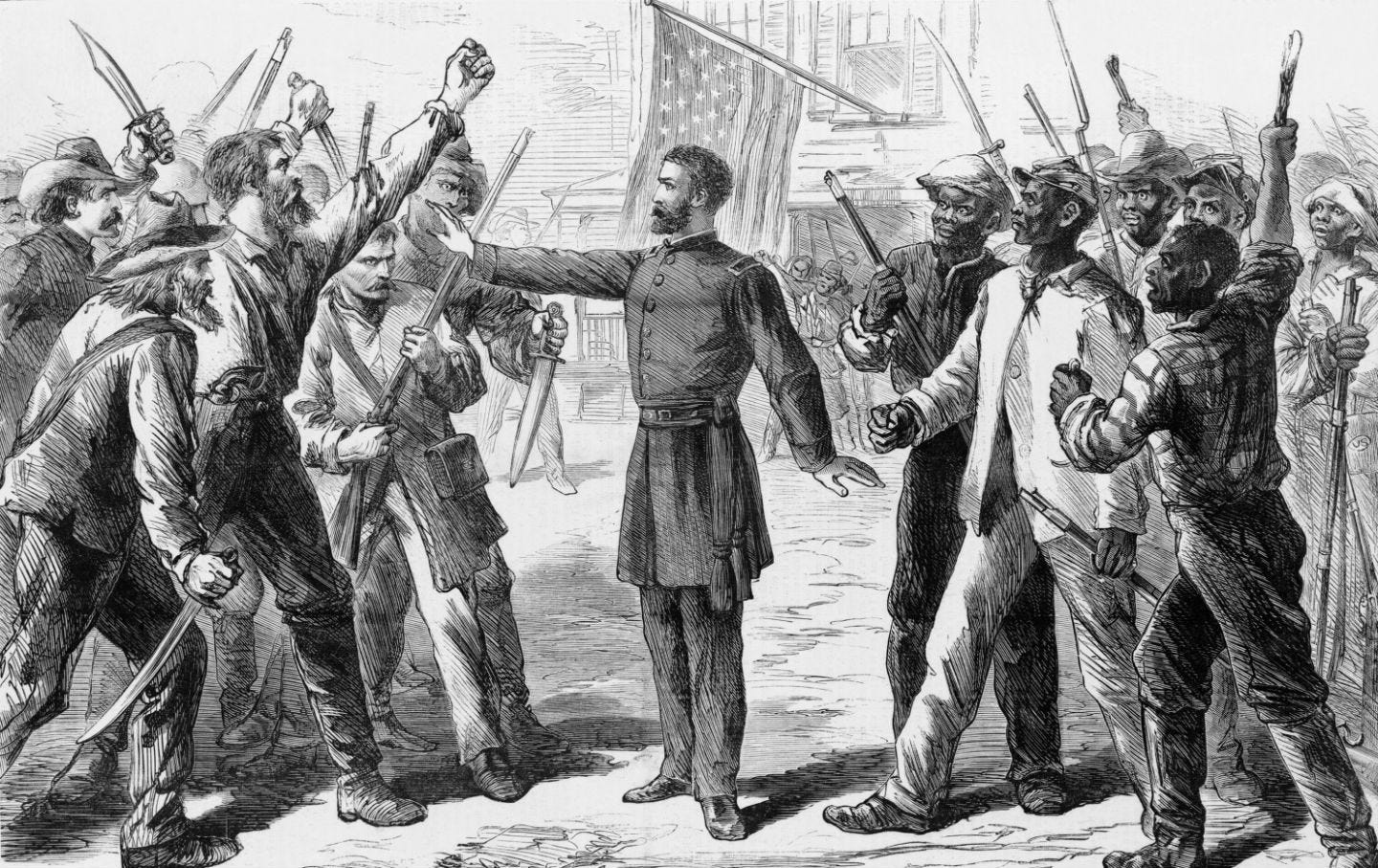On This Day in 1868: The Camilla Massacre and America’s Broken Promise of Freedom
How a day of peaceful protest turned into slaughter, and why the fight for equality is never finished.
An Uncivil Peace
On September 19th, 1868, in a quiet Georgia town called Camilla, America failed to keep its word.
It had only been three years since the Civil War ended and slavery was abolished, but for many Black Americans, especially in the South, the so, called freedom they’d won on paper meant little in practice. That day in Camilla, a peaceful protest by newly elected Black lawmakers and their supporters was met not with welcome or even tolerance, but with shotguns, ambushes and bloodshed. Over a dozen Black men were killed, many more wounded, and the truth nearly buried along with their bodies.
What happened in Camilla wasn’t an isolated incident. It was the violent enforcement of white supremacy under the guise of law and order. And it was a message: that Black power, Black dignity, Black citizenship, were still seen as threats worth killing over.
Reconstruction Promises, White Rage Responses
To understand Camilla, you have to start with the promise of Reconstruction. After the Civil War, the Union victory brought constitutional amendments that theoretically secured freedom, citizenship and voting rights for former slaves. It was a revolutionary moment. For the first time, Black men were not only voting but also winning elections.
In Georgia, 33 Black men were elected to the state legislature. Among them was Philip Joiner, a formerly enslaved man turned politician. But their triumph didn’t last. White conservatives pushed back, arguing that while Black men could vote, they couldn’t hold office. A thin legal excuse for raw racism.
The fight moved from the courtroom to the streets. Joiner and his allies organised a peaceful march from Albany to Camilla, hoping to hold a rally, play music, and make speeches. They were not looking for trouble. They were looking to be heard.
What they got was a massacre.
Camilla: A Town That Chose Violence
The Camilla Massacre wasn’t spontaneous. It was an organised ambush. White locals, many deputised by the sheriff himself, were waiting. When the marchers entered the town square, they were gunned down without warning. The sheriff’s men fired from buildings, from rooftops, from horseback. They chased survivors through the woods, hunting them like animals.
There were children there. There were unarmed men and women. They had come to speak. They left in coffins, or bleeding in ditches, or running for their lives.
Some, like Daniel Howard, were captured and forced at gunpoint to collect the bodies of their dead friends.
There’s no clearer image of America’s betrayal than that.
Silence, Spin and the Power of Memory
After the massacre, the official story was spun with the usual contempt for truth. Local newspapers painted the event as a clash between armed mobs. The white attackers were framed as defenders of order. The Black marchers, the victims, were called agitators and threats.
Witnesses were silenced through fear. The authorities refused to investigate. No one was punished.
This erasure was part of the violence too. The people who pulled the triggers wanted to kill the truth as much as they wanted to kill the protestors.
But the truth has a way of bleeding through.
Survivors like Philip Joiner told their stories. National newspapers eventually picked them up. In Washington, Republican lawmakers used Camilla to argue for stronger Reconstruction measures. It led to temporary political victories, but in Georgia, it had the opposite effect. Voter suppression through fear and violence returned the Democrats to power. Progress was pushed back. The long shadow of Jim Crow began to fall.
Camilla faded from national memory, just as its attackers had intended.
For 130 years, the massacre was barely mentioned in public.
Why This Still Matters
It wasn’t until 1998 that the town of Camilla formally acknowledged what happened. It took until 2023 for an official historical marker to be installed.
That delay speaks volumes. It tells us how deeply this nation struggles to face its past when the truth is ugly and the victims are Black.
The Camilla Massacre wasn’t just a moment of violence, it was a clear rejection of the idea that Black people had a rightful place in America’s democracy. That rejection has echoed in every era since: through lynchings, voter suppression laws, police violence and systemic exclusion.
On this day in 1868, the United States showed that it was willing to kill Black citizens to protect white power. That’s not ancient history. That’s the foundation on which much of modern inequality still rests.
If we’re going to understand the roots of American racism, if we’re going to talk honestly about who was allowed to live free and who was not, we have to stop pretending that the Civil War ended in 1865.
It didn’t.
The fight for equality never stopped, and Camilla is one more graveyard on that battlefield.


